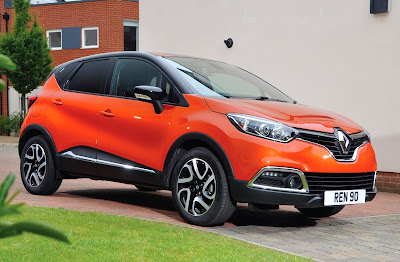After some time in the stylistic doldrums, Renault is back with a swish new range of cars in recent times, writes Brian Byrne. And with new levels of quality that revive a programme in that regard begun seven years ago with the Laguna III but which languished when that car was effectively replaced, in Ireland anyhow, with the decidedly downmarket Fluence.
I wrote positively a while ago about the new generation Clio, which has changed utterly the perception of that worthy but dated nameplate. Now I'm in a derivative off the same platform, the Captur.
Captur is fairly critical for Renault, as it gives the company a position in a space where all mass market carmakers — and some premium ones too — are chasing growth, the small SUV/crossover. With Opel's Mokka, Peugeot's 2008 (the winner of the Continental Irish Small Car of the Year 2014 accolade), and the incoming Ford EcoSport just three of the other contenders, it's a hard-fought place to be.
Certainly, the Renault offering stands out. The style is strong, with a puggist front. The two-tone colour schemes are no shrinking violets, you'll have no difficulty finding it in a crowded car park. Though the brash orange one is what you'll see in most adverts (and the review car), there is a variety other hues which are more elegant.
Inside, as in the new Clio, the finish is top notch. There are similarities in the interior trim and instruments to the smaller hatchback, providing a commendable clarity of information provision and easily understood controls. The touchscreen is a good mix of funkiness and practicality.
It's comfortable too, the front seats certainly living up to a long Renault good tradition in this area. I also wouldn't have any problems being ferried in the back of this one, as the designers seem to have used a real-people template rather than a notional dummy for space allowance.
The review car was powered by the 899cc 3-cylinder petrol engine recently introduced by Renault. Turbocharged, it offers 90hp and a 25 percent fuel consumption improvement compared to the 4-cylinder engine it replaces. There's also a 1.5 dCi diesel available, and though colleagues suggest it is the ideal for this particular car, I have no reservations about the 3-pot, which suits very well for the mix of driving which this small family vehicle is likely to be most used for. The CO2 emissions are 113/95g respectively, so Road Tax is minimal in either case.
Three-cylinder engines have special characteristics that help reduce build costs and improve efficiencies, and almost every manufacturer is either producing or developing the format, so we might as well get used to the distinctive sound they provide.
As the Captur is on the same architecture as Nissan's Juke, and competing with the Japanese partner car too, it was no surprise that the handling and ride dynamics were good. Even the steering seems more definite than we have been used to from Renault, so perhaps everything is tightening up nicely.
I have no idea of what the company hopes for in sales terms for the Captur here, and in our relatively conservative market they might be small enough, but I expect the car will do very well indeed across the Continent, where Juke has done also.
As I said, it's a tough space. But Captur deserves to capture its own share of it. The way the company developed it and the Clio bodes well for next year's revised Megane and the brand new Laguna.
Captur prices start at €19,390. There are two grades and an automatic is available with the diesel.


